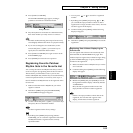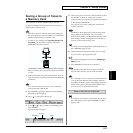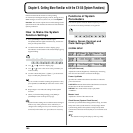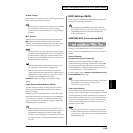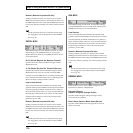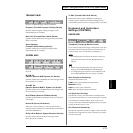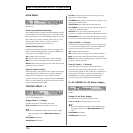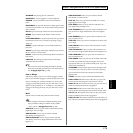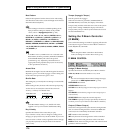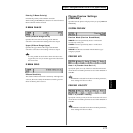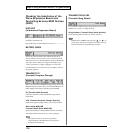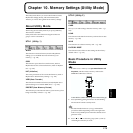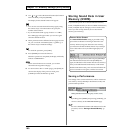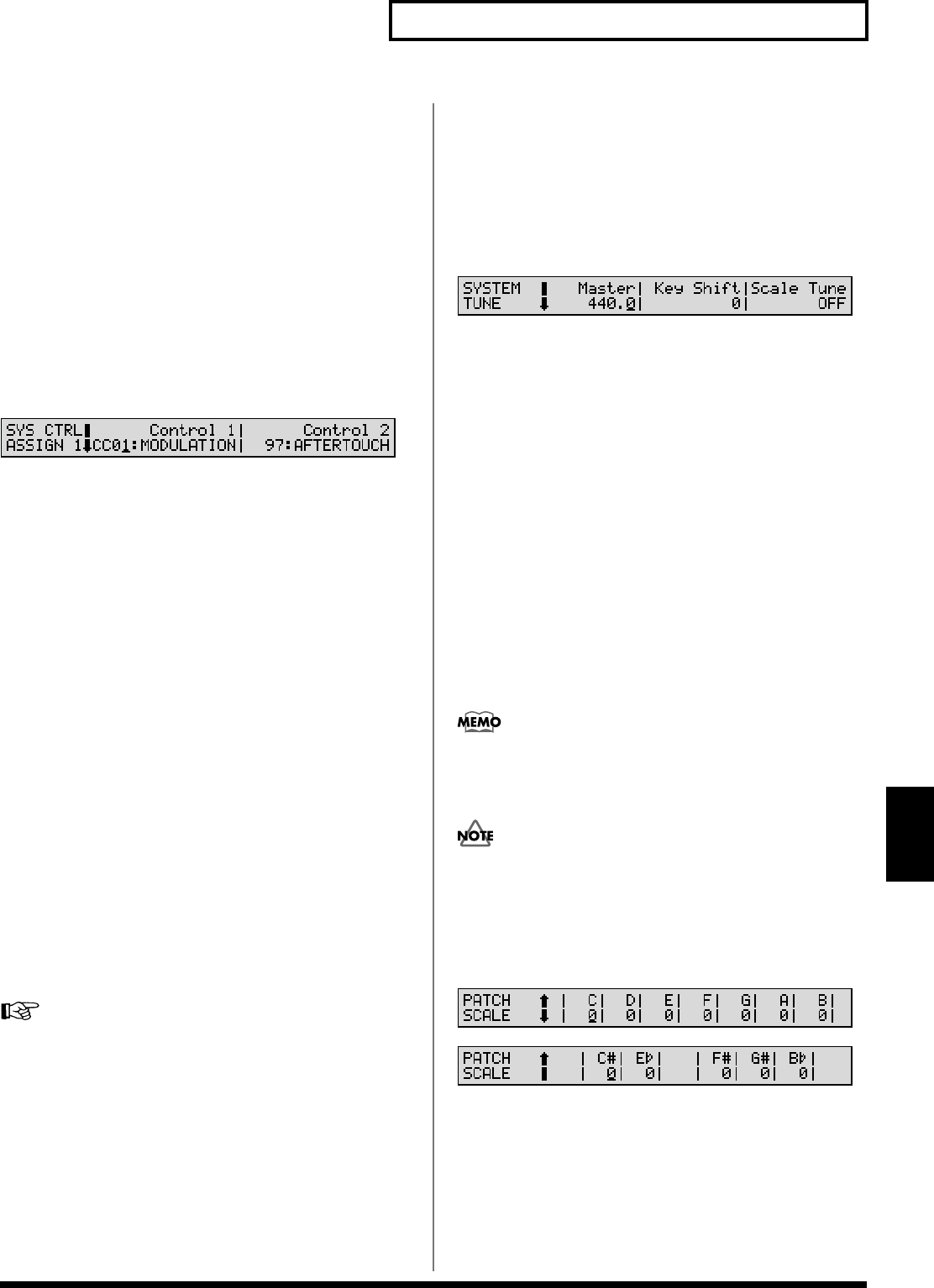
173
Chapter 9. Getting More Familiar with the XV-88 (System Functions)
Chapter 9
C1–C4 Output (C1–C4 Slider Output)
Selects the sound generator(s) (the internal sound generator
and/or external sound generators connected to MIDI OUT
connector) to be controlled by each slider.
OFF: Neither will be controlled.
INT: Only the internal sound generator will be controlled.
MIDI: Only external sound generators will be controlled.
BOTH: Both the internal sound generator and external sound
generators will be controlled.
SYS CTRL ASSIGN 1, 2
(System Control Assign 1, 2)
fig.09-15
This function, which departs from previously used methods,
and instead allows you to use MIDI messages to change Tone
settings in realtime, is called the Matrix Controller (p. 78).
Similarly, the function allowing you to use MIDI messages to
change Multi-effects settings in realtime is called the Multi-
effects Controller (p. 115).
Normally, the Matrix Controller is used for making Patch
settings, and the Multi-effects Controller for making settings
to Performances, Patches, and Rhythm Sets. However, if the
MIDI messages used as Matrix Controllers or Multi-effects
Controllers need not be changed for each individual
Performance, Patch, or Rhythm Set, or if you want to use
specific MIDI messages for Matrix Controllers or Multi-
effects Controllers, make the settings for the System
Controller. In other words, you could call the System
Controllers global Matrix Controllers/Multi-effects
Controllers for the entire XV-88.
You can use up to four System Controllers.
Control 1–4 (System Control Assign 1–4)
System Control Assign selects the MIDI message used as the
System Controller.
CC01–31, 33–95: Controller numbers 1–31, 33–95
For more detailed information about Control Change
messages, please refer to “MIDI Implementation” (p.
270).
PITCH BEND: Pitch Bend
AFTERTOUCH: Aftertouch
Adjusting Tuning (TUNE)
Parameters in this group adjust the tuning of the internal
sound generator, or change the temperament of the
keyboard.
SYSTEM TUNE
fig.09-16
Master (Master Tune)
Adjusts the overall tuning of the XV-88. The display shows
the frequency of the A4 note (center A).
Key Shift (Master Key Shift)
Shifts the overall pitch of the XV-88 in semitone steps.
Scale Tune (Scale Tune Switch)
Turn this ON when you wish to use a tuning scale other than
equal temperament.
One set of Scale Tune settings can be created in Patch mode.
In Performance mode and GM mode, each Part can have its
own Scale Tune settings.
The XV-88 allows you to play the keyboard using
temperaments other than equal temperament. The pitch is
specified in one-cent units relative to the equal tempered pitch.
• One-cent is 1/100th of a semitone.
• The selected scale applies to MIDI messages received
from an external MIDI device.
The SCALE page, in which the tuning settings are made,
varies depending on the mode selected before [SYSTEM]
is pressed.
PATCH SCALE
fig.09-17
fig.09-18
If you wish to define a scale for use in Patch mode, press
[SYSTEM] while in Patch mode, and then press [TUNE]
located in the row of function buttons to access the PATCH
SCALE page.
In Patch mode there are separate screens for the white keys
and black keys, and the settings for one octave (C–B) will
determine the tuning for all octaves.



